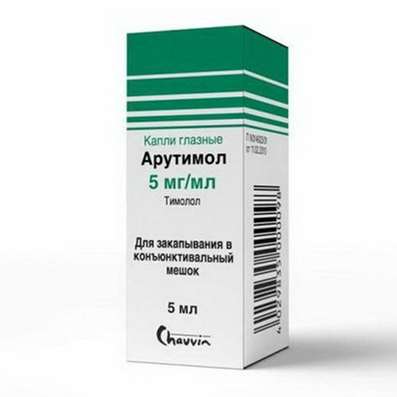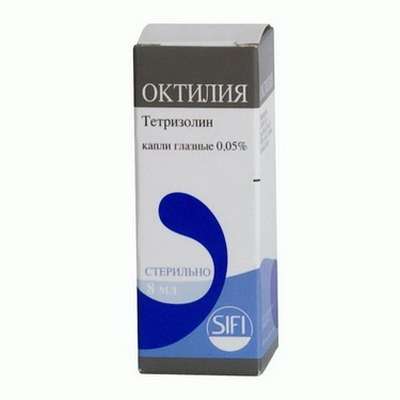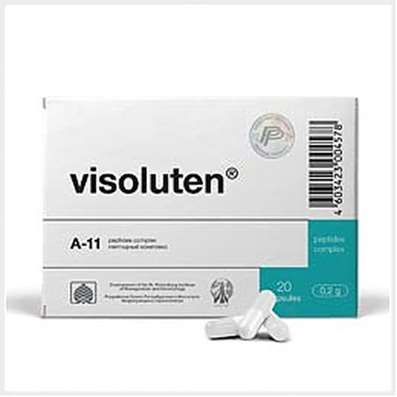Instruction for use: Ketonal DUO
I want this, give me price
Active substance Ketoprofen
ATX code M01AE03Ketoprofen
Pharmacological group
Non-steroidal anti-inflammatory drug (NSAID) [NSAIDs - Propionic acid derivatives]
Nosological classification (ICD-10)
C80 Malignant neoplasm without specification of localization
Malignant tumor, Malignant neoplasm, Malignant neoplasms of different localization, Malignant tumors, Eton-Lambert syndrome, Locally prevalent forms of malignant neoplasms, Metastatic ascites, Cerebellar degeneration in tumors, Hereditary cancers, Metastatic tumors, Cancer ascites, Solid tumors
M02.3 Reiter's Disease
Reiter's syndrome, Arthritis is infectious-allergic, Arthritis Reactive, Urethro-oculo-synovial syndrome
M06.9 Other specified rheumatoid arthritis
Rheumatoid arthritis,Pain syndrome in rheumatic diseases, Pain in rheumatoid arthritis, Inflammation in rheumatoid arthritis, Degenerative forms of rheumatoid arthritis, Children's rheumatoid arthritis, Exacerbation of rheumatoid arthritis, Acute articular rheumatism, Rheumatic arthritis, Rheumatic polyarthritis, Rheumatoid arthritis, Rheumatic polyarthritis, Rheumatoid arthritis, Rheumatoid arthritis of active course, Rheumatoid arthritis, Rheumatoid polyarthritis, Acute rheumatoid arthritis, Acute rheumatism
M07.3 Other psoriatic arthropathies (L40.5 +)
Arthritis psoriatic, The generalized form of psoriatic arthritis, Psoriatic arthritis
M10 Gout
Exacerbation of gout, Acute articular attack with gout, Acute gouty attack, Gouty attack, Recurrent gout attacks, Chronic gout
M14.1 Crystal arthropathy in other metabolic diseases
Pseudogout
M19.9 Arthrosis, unspecified
Change in brush with osteoarthritis, Osteoarthritis, Osteoarthrosis, Arthrosis of large joints, Pain syndrome in osteoarthritis, Pain syndrome in acute inflammatory diseases of the musculoskeletal system, Pain syndrome in chronic inflammatory diseases of the musculoskeletal system, Deforming arthrosis, Deforming osteoarthritis, Deforming osteoarthritis of joints, Osteoarthritis in the acute stage, Osteoarthritis of large joints, Acute pain syndrome with osteoarthritis, Post-traumatic osteoarthritis, Rheumatic osteoarthritis, Spondylarthrosis, Chronic osteoarthritis
M25.5 Pain in the joint
Arthralgia, Pain syndrome in musculo-articular diseases, Pain syndrome in osteoarthritis, Pain syndrome in osteoarthritis, Pain syndrome in acute inflammatory diseases of the musculoskeletal system, Pain syndrome in chronic inflammatory diseases of the musculoskeletal system, Pain in the joints, Soreness of the joints, Soreness of joints in severe physical exertion, Painful inflammatory joint damage, Painful conditions of the musculoskeletal system, Painful joint conditions, Painful traumatic affection of joints, Pain in the musculoskeletal system, Pain in Shoulder Joints, Pain in the joints, Joint pain, Joint pain with injuries, Musculoskeletal pain, Pain with osteoarthritis, Pain in the pathology of the joints, Pain in rheumatoid arthritis, Pain in chronic degenerative bone diseases, Pain in chronic degenerative joint diseases, Bone-joint pain, Joint pain, Arthritic pain of rheumatic origin, Articular pain syndrome, Joint pain, Rheumatic pain, Rheumatic pains
M45 Ankylosing spondylitis
Ankylosing spondylarthrosis, Marie-Strumpel disease, Ankylosing spondylitis, Pain syndrome in acute inflammatory diseases of the musculoskeletal system, Pain syndrome in chronic inflammatory diseases of the musculoskeletal system, Bechterew's disease, Ankylosing spondylitis, Diseases of the spinal column, Rheumatic spondylitis, Bechterew-Marie-Strumpel disease
M47.9 Spondylosis, unspecified
Deforming spondylosis, Diseases of the spine, Spondyloarthritis, Seronegative spondylitis, Spondylarthrosis
M54 Dorsalgia
Pain in the back area, Pain in the spine, Back pain, Pain in different parts of the spine, Backache, Painful pain syndrome in the spine, Pain in the musculoskeletal system
M54.1 Radiculopathy
Acute sciatica, Radiculopathy, Radiculitis, Radiculitis with radicular syndrome, Acute radiculopathy, Pain syndrome with radiculitis, Subacute radiculitis, Radiculitis, Chronic radiculitis, Diseases of the spinal column
M71 Other bursopathies
Bursitis, Bursopathy, Diseases of soft tissues, Osteoarthritis in musculo-articular diseases, Inflammatory disease of soft tissues, Subacute bursitis
M77.9 Other unspecified
Capsule, Periarthritis, Tendonitis, Tendopathy, Periarthropathy
M79.1 Myalgia
Myofascial pain syndromes ,Pain syndrome in musculo-articular diseases, Pain syndrome in chronic inflammatory diseases of the musculoskeletal system, Pain in the muscles, Tenderness of muscles, Muscular soreness in severe physical exertion, Painful conditions of the musculoskeletal system, Pain in the musculoskeletal system, Pain in the muscles, Pain at rest, Muscle aches, Muscle pain, Musculoskeletal pain, Myalgia, Muscle pain, Muscle pain at rest, Muscle pain, Muscular pain of non-rheumatic origin, Muscle pain of rheumatic origin, Acute muscle pain, Rheumatic pain, Rheumatic pains, Myofascial syndrome, Fibromyalgia
M79.2 Neurology and neuritis, unspecified
Pain syndrome with neuralgia, Brachialgia, Occipital and intercostal neuralgia, Neuralgia, Neuralgic pain, Neuralgia, Neuralgia of intercostal nerves,Neuralgia of the posterior tibial nerve, Neuritis, Neuritis traumatic, Neuritis, Neurological Pain Syndromes, Neurological contractures with spasms, Acute neuritis, Peripheral neuritis,Post-traumatic neuralgia,Severe pain of a neurogenic nature, Chronic neuritis, Essential neuralgia
N94.6 Dysmenorrhea Unspecified
Pain during menstruation, Functional disorders of the menstrual cycle, Menstrual cramps, Emmeniopathy, Pain during menstruation, Painful menstrual irregularities, algomenorrhea, algomenoreya, Pain smooth muscle spasm, Pain spasm of smooth muscles (renal and biliary colic, intestinal spasms, dysmenorrhea), Pain spasm of smooth muscles of internal organs (kidney and biliary colic, intestinal spasms, dysmenorrhea), Disalgomenoreya, dysmenorrhea, Dysmenorrhea (essential) (Exfoliative), menstrual disorder, menstruation painful, metrorrhagia, Violation of the menstrual cycle, Menstrual irregularities, Prolaktinzavisimoe menstrual disorders, Prolaktinzavisimoe menstrual dysfunction, Pain spasm of smooth muscles of internal organs, Spasmodic dysmenorrhea, Primary disalgomenoreya
R51 Headache
Pain in the head, Cephalgia, Pain with sinusitis, Pain in the back of the head, Painful headache, Headache of vasomotor genesis, Headache of vasomotor origin, Headache with vasomotor disorders, Headache, Neurological headache, Serial headache
R52.1 Constant unrestrained pain
Pain syndrome in oncology practice, Pain syndrome pronounced, Pain syndrome in malignant neoplasms, Pain syndrome in cancer, Pain syndrome with tumors, Pain syndrome in cancer patients, Pain in malignant neoplasms, Pain in malignant tumors, Pain in tumors, Pain in cancer patients, Pain in bone metastases, Pain in cancer, Malignant pain syndrome, Intensive chronic pain, Intensive pain syndrome, Intensive non-curable pain syndrome, Intensive chronic pain syndrome, Unrestrained pain, Unrestrained pain, Tumor pain, Post-traumatic pain syndrome, Severe pain, Chronic pain, Chronic Pain Syndrome
R52.9 Unspecified Pain
Pain after cholecystectomy, Pain shooting, Non-malignant pain, Obstetric and gynecological pain, Pain syndrome, Pain in the postoperative period, Pain in the postoperative period after orthopedic surgery, Pain of inflammatory genesis, Pain than cancer genesis, Pain syndrome after diagnostic procedures, Pain after surgery Diagnostic, Pain after surgery, Pain after orthopedic surgery, Pain after injuries, Pain after the removal of hemorrhoids, Pain at the non-rheumatic inflammation of nature, Pain in inflammatory lesions of the peripheral nervous system, Pain in diabetic neuropathy, Pain in acute inflammatory diseases of the musculoskeletal system, Pain when the tendon pathology, Pain smooth muscle spasm, Pain spasm of smooth muscles (renal and biliary colic, intestinal spasms, dysmenorrhea), Pain spasm of smooth muscles of internal organs, Pain spasm of smooth muscles of internal organs (kidney and biliary colic, intestinal spasms, dysmenorrhea), Pain in trauma syndrome, Pain with injuries and after surgical interventions, Pain in chronic inflammatory diseases of the musculoskeletal system, Pain with duodenal ulcer, Pain syndrome in gastric ulcer, Pain syndrome in gastric ulcer and duodenal ulcer, pain, Pain during menstruation, pain syndromes, painful condition, Painful foot fatigue, Sore gums when wearing dentures, Soreness of the cranial nerves exit points, Painful menstrual irregularities, Painful dressings, Painful muscle spasm, Painful teeth growth, Melosalgia, Pain in the area of the surgical wound, Pain in the postoperative period, Pain in the body, Pain after diagnostic procedures, Pain after orthopedic surgery, Pain after surgery, The pains of the flu, Pain in diabetic polyneuropathy, Pain for burns, Pain during sexual intercourse, Pain during diagnostic procedures, Pain during therapeutic procedures, for colds Pain, Pain in sinusitis, Pain in trauma, Pain traumatic, The pain in the postoperative period, Pain after diagnostic procedures, The pain after sclerotherapy, Pain after surgery, postoperative Pain, Pain postoperative and posttraumatic, posttraumatic pain, Pain when swallowing, Pain in infectious and inflammatory diseases of the upper respiratory tract, The pain of burns, The pain in traumatic muscle injury, Pain in trauma, The pain of tooth extraction, The pain of traumatic origin, Pain caused by spasm of smooth muscles, Expressed pain syndrome, Expressed pain syndrome, traumatic origin, Postoperative pain, Post-traumatic pain, Post-traumatic pain syndrome, Torpid pain, Traumatic pain, Traumatic pain, Mild pain, Moderately severe pain, Moderate pain, Polyarthralgia with polymyositis
T14.9 Injury unspecified
Pain syndrome after trauma, Pain syndrome with injuries, Pain syndrome with trauma and after surgery, Pain in case of injury, Pain of a traumatic nature, Joint pain with injuries, Postoperative and post-traumatic pain, Pain in case of injury, Pain of a traumatic origin, Severe pain syndrome of traumatic origin, Deep tissue damage, Deep scratches on the trunk, Closed injury, Minor Household Injuries, Minor skin damage, Violations of the integrity of soft tissues, Uncomplicated trauma, Extensive traumatic injury, Acute pain syndrome of traumatic origin, Edema with trauma, Postponed sports injuries, Post-traumatic pain, Soft tissue injuries, Joint wounds, Sports injuries, Injury, Traumatic pain, Traumatic pains, Traumatic infiltrate,Injuries to sports
T88.9 Complication of surgical and medical care, unspecified
Pain in the postoperative period, Pain in the postoperative period after orthopedic surgery, Pain syndrome after diagnostic procedures, Pain after surgery Diagnostic, Pain after surgery, Pain after orthopedic surgery, Pain after the removal of hemorrhoids, Pain in the application of excimer laser, Pain with injuries and after surgical interventions, Pain syndromes in the dental practice, Painful diagnostic intervention, Painful diagnostic manipulations, Painful instrumental diagnostic procedures, Painful instrumental manipulation, Painful treatments, Painful manipulations, Painful dressings, Painful therapeutic interventions, Pain in the area of the surgical wound, Pain in the postoperative period, Pain after diagnostic procedures, Pain after orthopedic surgery, Pain during diagnostic procedures, Pain during therapeutic procedures, Pain in orthopedics, The pain in the postoperative period, Pain after diagnostic procedures, The pain after sclerotherapy, The pain after dental surgery, postoperative Pain, Pain postoperative and posttraumatic, The pain of tooth extraction, Inflammation after surgery or injury, Inflammation after orthopedic surgery, Inflammation after surgery, The inflammatory syndrome after surgery, Festering postoperative fistula, Operating wound, Complications after tooth extraction
Composition
Capsules with modified release 1 caps.
pellet core
active substance:
ketoprofen 150 mg
auxiliary substances: MCC; lactose monohydrate; povidone; sodium croscarmellose; polysorbate 80
pellet shell: eudragit RS30D (ethyl acrylate, methyl methacrylate and trimethylammonioethyl methacrylate copolymer [1: 2: 0.1]); eudragit RL30D (ethyl acrylate, methyl methacrylate and trimethylammonioethyl methacrylate copolymer [1: 2: 0.2]); triethyl citrate; polysorbate 80; talc; iron (III) oxide yellow (E172); Silica colloidal dioxide
capsule shell: gelatin; indigo carmine (E132); titanium dioxide (E171)
Description of dosage form
Capsule number 1 with a transparent casing and a blue lid. The contents of the capsule are white and yellow pellets.
pharmachologic effect
Pharmacological action - anti-inflammatory, antipyretic, analgesic.
Pharmacodynamics
Ketoprofen is an NSAID with an anti-inflammatory, analgesic and antipyretic effect. Due to the inhibition of COX-1 and COX-2 and, in part, lipoxygenase, ketoprofen inhibits the synthesis of PG and bradykinin, stabilizes the lysosomal membranes. Ketoprofen does not adversely affect the condition of the articular cartilage.
Pharmacokinetics
KetonalŪ DUO is a new dosage form that differs from conventional capsules by the release of the active substance. Capsules with modified release contain two types of pellets, white (about 60% of the total) and yellow (coated). Ketoprofen is rapidly released from white pellets and slowly - from yellow, which causes a combination of rapid and prolonged action of the drug.
The drug is well absorbed after ingestion. The bioavailability of both conventional capsules and modified release capsules is the same and is 90%. Eating does not affect the overall bioavailability (AUC) of ketoprofen, but decreases the rate of absorption.
After oral administration of ketoprofen in the form of capsules with a modified release of 150 mg, plasma Cmax of 9036.64 ng / ml is achieved within 1.76 hours.
Distribution. Ketoprofen is 99% bound to blood plasma proteins, mainly with albumin fraction. Vd in tissues is 0.1-0.2 l / kg. The drug penetrates well into the synovial fluid and reaches a concentration equal to 30% of the plasma. Significant concentrations of ketoprofen in the synovial fluid are stable and persist up to 30 hours, resulting in long-term pain and joint stiffness.
Metabolism and excretion. Ketoprofen undergoes intensive metabolism by means of microsomal liver enzymes, T1 / 2 ketoprofen for less than 2 hours. It binds to glucuronic acid and is excreted from the body in the form of glucuronide. There are no active metabolites of ketoprofen.
Up to 80% of ketoprofen is excreted by the kidneys, the rest is through the digestive tract.
In patients with hepatic insufficiency, the plasma concentration of ketoprofen was increased 2-fold (probably due to hypoalbuminemia and, as a result, a high level of unbound active ketoprofen); such patients need the administration of the drug in a minimal therapeutic dose.
In patients with renal insufficiency, clearance of ketoprofen is reduced, which also requires correction of doses.
In elderly patients, metabolism and excretion of ketoprofen occur more slowly, but this is of clinical significance only for patients with decreased renal function.
indications
Symptomatic therapy of painful and inflammatory processes of various origin, including:
inflammatory and degenerative diseases of the musculoskeletal system: rheumatoid arthritis; seronegative arthritis - ankylosing spondylitis (Bechterew's disease), psoriatic arthritis, reactive arthritis (Reiter's syndrome); gout, pseudogout; osteoarthritis;
pain syndrome: headache; tendonitis, bursitis, myalgia, neuralgia, sciatica; post-traumatic and postoperative pain syndrome; pain syndrome in cancer; algodismenorea.
Contraindications
hypersensitivity to ketoprofen or other components of the drug, as well as salicylates or other NSAIDs;
bronchial asthma, rhinitis or urticaria in history caused by taking acetylsalicylic acid or other NSAIDs;
peptic ulcer of the stomach or duodenum in the stage of exacerbation;
nonspecific ulcerative colitis, Crohn's disease in the acute phase, inflammatory bowel disease in the acute stage;
hemophilia and other bleeding disorders;
children's age (up to 15 years);
severe hepatic impairment;
severe renal failure, progressive kidney disease;
uncompensated heart failure;
Postoperative period after coronary artery bypass grafting;
gastrointestinal, cerebrovascular and other bleeding (or suspicion of bleeding);
chronic dyspepsia;
III trimester of pregnancy, lactation.
With caution: peptic ulcer in history; bronchial asthma in history; clinically expressed cardiovascular, cerebrovascular diseases and diseases of peripheral arteries; dyslipidemia; progressive liver disease; hyperbilirubinemia; alcoholism; kidney failure; chronic heart failure; arterial hypertension; blood diseases; dehydration; diabetes; anamnestic data on the development of gastrointestinal ulcer; smoking; concomitant therapy with anticoagulants (eg warfarin), antiaggregants (eg acetylsalicylic acid), oral GCS (eg prednisolone), SSRIs (eg citalopram, sertraline), prolonged use of NSAIDs.
pregnancy and lactation
The use of ketoprofen in the third trimester of pregnancy is contraindicated. In the first and second trimesters of pregnancy, the prescription of the drug is only possible if the intended benefit to the mother exceeds the potential risk to the fetus.
When taking the drug during lactation, it is necessary to resolve the issue of stopping breastfeeding.
Side effects
The incidence of side effects is characterized as very common (> 10%), common (> 1%, <10%), unresponsive (> 0.1%, <1%), rare (> 0.01%, <0.1 %) and very rare (<0.01%).
Allergic reactions: common - skin reactions (itching, urticaria); unexplored - rhinitis, dyspnea, bronchospasm, angioedema, anaphylactoid reactions.
Digestive system: common - dyspepsia (nausea, diarrhea or constipation, flatulence, vomiting, decreased or increased appetite), abdominal pain, stomatitis, dry mouth; Unspoken (with prolonged use in large doses) - ulceration of the mucous membrane of the gastrointestinal tract, a violation of liver function; rare - perforation of the gastrointestinal tract, exacerbation of Crohn's disease, melena, gastrointestinal bleeding.
CNS: common - headache, dizziness, sleep disturbance, fatigue, nervousness, nightmarish dreams; rare - migraine, peripheral polyneuropathy; very rare - hallucinations, disorientation and speech disorder.
Sensory organs: rare - noise in the ears, change in taste, blurred vision, conjunctivitis.
SSS: non-common - tachycardia, arterial hypertension, peripheral edema.
Urinary system: rare - renal dysfunction, interstitial nephritis, nephrotic syndrome, hematuria (often develop in people taking NSAIDs and diuretics for a long time).
Other: rare - hemoptysis, menometrorrhagia.
Laboratory indicators: ketoprofen reduces platelet aggregation; transient increase in the level of liver enzymes; rare - anemia, thrombocytopenia, agranulocytosis, purpura.
Interaction
Ketoprofen can weaken the action of diuretics and antihypertensives and increase the effect of oral hypoglycemic and some anticonvulsants (phenytoin).
Joint application with other NSAIDs, salicylates, GCS, ethanol increases the risk of developing unwanted effects from the gastrointestinal tract. Simultaneous appointment with anticoagulants, thrombolytic agents, antiaggregants increases the risk of bleeding.
With the simultaneous administration of NSAIDs with diuretics or ACE inhibitors, the risk of renal dysfunction increases.
Increases the concentration in the plasma of cardiac glycosides, BCC, lithium preparations, cyclosporine, methotrexate.
NSAIDs may decrease the effectiveness of mifepristone. The intake of NSAIDs should be started no earlier than 8-12 days after the withdrawal of mifepristone.
Dosing and Administration
Inside.
The standard dose of KetonalŪ DUO for adults and children over 15 years is 150 mg / day (1 capsule with modified release). Capsules should be taken during or after a meal, washed down with water or milk (the volume of the liquid should be at least 100 ml).
The maximum dose of ketoprofen is 200 mg / day.
Overdose
As with other NSAIDs, with an overdose of ketoprofen, nausea, vomiting, abdominal pain, vomiting with blood, melena, impaired consciousness, respiratory depression, seizures, impaired renal function and kidney failure may occur.
In case of overdosage, gastric lavage and the use of activated charcoal are indicated. Treatment is symptomatic; the effect of ketoprofen on the gastrointestinal tract can be relaxed with the help of H2-receptor antagonists, proton pump inhibitors and PG.
special instructions
With prolonged use of NSAIDs, it is necessary to monitor the blood state, as well as the functional state of the kidneys and liver, especially in elderly patients (over 65 years of age).
It is necessary to be careful and more often to monitor blood pressure when using ketoprofen for the treatment of patients suffering from hypertension, cardiovascular diseases that lead to fluid retention in the body. Like other NSAIDs, ketoprofen can mask signs of infectious diseases.
Effect on ability to concentrate. Data on the adverse effects of KetonalŪ DUO at recommended doses on the ability to drive or operate machinery are not present. However, patients who notice unusual effects when taking KetonalŪ DUO should be careful when practicing potentially dangerous activities that require an increased concentration of attention and speed of psychomotor reactions.
Form of issue
Capsules with modified release, 150 mg. For 10 caps. in the blister; 2 or 3 blisters in a cardboard bundle.
Conditions of leave from pharmacies
On prescription.
storage conditions
In the dark place at a temperature of no higher than 25 ° C.
Keep out of the reach of children.
Shelf life
2 years.
Do not use after the expiry date printed on the package.

 Cart
Cart





